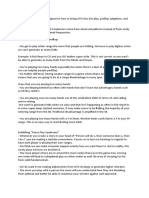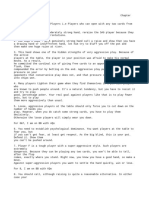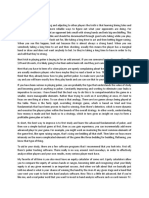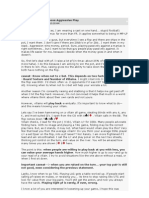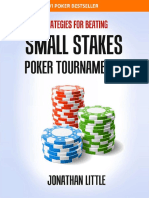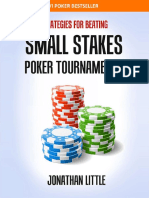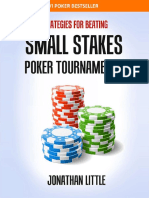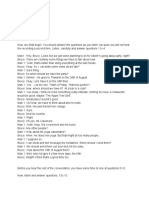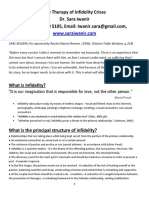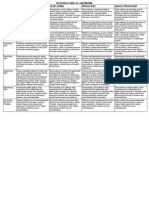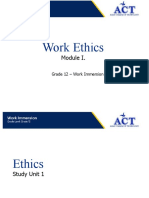Why and how to make notes
Why?
Not a single poker tactic will deliver if not applied correctly. Our system itself is both easily
adaptive and hard to exploit. The adaptation to game conditions must ultimately be done by the
player himself. In addition to HUD statistics notes must be used.
So far our decision making has been based on the games probabilistic foundations and the
information given by our datamine. This is a strong starting point. As soon as you enter the game
yourself you must start observing how opponents react spesifically to you.
Details from last weeks poker hands often escape human memory. Furthermore memories tend to be
very selective especially when holding a marginal hand. Notes serve as an extension of our memory
to store observations of what has really happened.
We do not recommend making general notes like "re-raises crap" in the beginning. You should
rather make notes on the spesific plays an opponent makes. This is mainly because context changes
in poker. The general notes may not be accurate in different contexts but with experience notes of
actual hands often provide relevant information in many different contexts.
When you have a lot of notes on someone it may be useful to summarise them into more general
statements. At this point you should have enough understanding of the opponents thought processes
to have an idea of the limits of your generalisations.
How?
Many players see patterns where there are none. On the other hand the unconcious mind should not
be completely disregarded as it has a huge capacity. The signals that the unconcious mind gives
during play are often hard to interpret. Personally money won or lost recently, emotional status and
other factors, irrelevant in making the highest EV play, are definately reflected in the signals my
unconcious mind gives me. It has taken years of play experience for me to begin to interpret them
reliably at all.
I believe that students of the game get the most of their very slowly developing sixth sense with
notes. When you have a particularly strong gut-feeling of an opponents tendencies make a note of it
and next time you are in a relevant scenario against the same guy adjust your play slightly
according to your still very uncertain note. Smaller doubts should still be just ignored.
Best way to illustrate this is thru an example:
We are in a couple of same tables with a 14/18 tight player (aka. nit) who has a very low overall 3-
bet of 4% and he also 3-bets significantly under 10% against both BTN- and SB-opens. We do not
have any notes of this guy or do not remember playing against him in the past.
We clearly put this guy in the "tight"-category in all the scenarios where he re-raises our open raise.
�After sitting with him in different tables for half an hour or so we feel that he has re-raised our late
position open raises unusually often for a "tight"-category player. We have correctly folded
according to the tables but are suspicious of this opponent. Thus, we make a note "Re-raises hero
CO, BTN more than expected???".
The next couple of times he re-raises our cutoff or button open we should go all-in a bit more, with
the same hands we do against "baseline" category to be exact. If we see him re-raising us lighter
than the "tight" category, then we'll definately make a note and play accordingly. However if he
only shows us monsters we should add it in to our note.
What exactly should we observe and note?
It is of utmost importance to make efficient notes. It is hard enough to write short notes while
multitabling. The notes should also be quick to read as they pile up fast. I read all the notes I have
on players at the table while waiting for my first blinds to come. This is a good habit.
Efficient notes should contain relevant information that your HUD does not provide. You should
make a note if opponent makes something unexpected in light of his HUD stats and the games
probabilistic foundations.
An example:
A good aggressive fullstacked player opens three times the big blind from the UTG, he does this
19% of the time according to our HUD. He folds to 3-bets overall 62% and the numbers from early
positions are close to that as well. We have a lot of datamined hands of this player but no notes or
relevant playhistory.
Other players fold and we are in the big blind with 17 BB (including the big blind we have posted).
We expect this opponent to play well against our re-raise. Thus he should call approximately with
33+,A7s+,KTs+,QJs,A9o+,KQo which is optimal calling range if he opens with 20% of hands.
We have QT of hearts and push as it is included in our range of :
44+,A4s+,KTs+,QTs+,JTs,T9s,A9o+,KQo which we should push with 17 BB against a 20% opener
(as can be seen from our push charts).
The opponent thinks for a while and calls with KTo. This is clearly too loose as he should not even
call with KJo according to our charts. We make a note "RCAI KTo UTG iBB17x LOOSE".
The note tells that the opponent has Raise-Called-All-In with KTo from UTG and I was in the Big
Blind with 17 times the big blind stack. Further the note says that opponent played too LOOSE in
this scenario.
This note is very useful in itself and I would start cutting the worst hands from my all-in ranges
against his early position open or when my stack is under 20BB. If we get a couple of more notes
saying that this guy calls our all-in too loose after opening, then I would start tightening my re-raise
ranges against him in all situations.
�When?
Below is a list of the situations you MUST make good notes of. In practise a standardised note
system with abbreviations is the best. The examples are unedited notes from recent games.
In order of importance, the six note categories are:
1. The opponent Re-Raises and then Folds to heros all-in.
example: "iCO12eBB30-F(121)"
Hero opened to 12 from the CO, the opponent re-raised to 30 in the BB and
folded to all-in of effectively 121.
2. RR, the opponent Re-Raises
example: "iCOeRRAI QTs SB"
Hero opened from the CO and the opponent re-raised all-in with QTs from
the SB.
3. RCAI, the opponent open Raises and the Calls our All-In
example: "RCAI CO ATo iBTN20bb"
4. CC, the opponent Cold-Calls
example: "CC iHJ AA eBTN"
5. post-flop
Unexpected post-flop lines.
6. suspicions
A note of suspicious pattern from the opponent, which hero doesn't yet have hard
evidence of. Example in the page above.
When playing lots of tables one might not have the time to make a note. If you are too busy, mark
the hands that you need to make notes of or analyse. THEN DO SO AFTER EACH SESSION!













